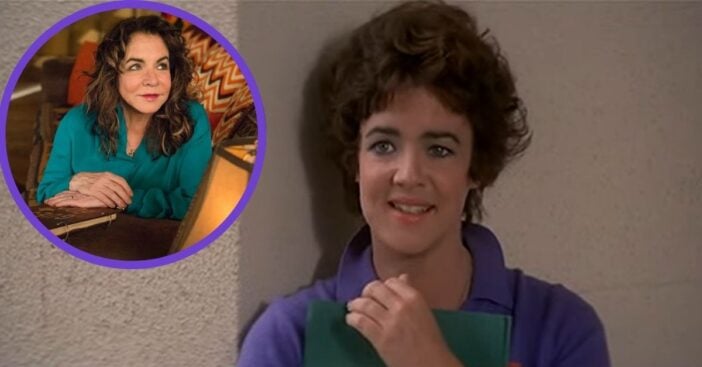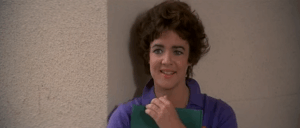
Updated 8/1/25
There were two kinds of people calling the shots in Grease, T-Birds led by John Travolta and Pink Ladies. Among these powerful factions, Betty Rizzo was one of the toughest, and that stubborn charisma made her the natural leader of the Pink Ladies. It helped that actress Stockard Channing was well into her career – and adulthood – when she landed the role; that confidence bled through easily. Viewers saw this again in projects like Practical Magic and fell in love all over again in NBC’s West Wing. But in between a career that spans over five decades and counting, Channing was married several times; she divorced four times, specifically. This pattern began when she was relatively young but even after such tumult, she has managed to keep up a positive outlook for the future – and for men.
The star that danced her way into so many hearts was born as Susan Williams Antonia Stockard on February 13, 1944. The Manhattan native was raised along the Upper East Side with a father in the shipping business and a mother from an extensively Irish Catholic background. New York also hosted her studies, which focused on history and the arts. Despite a natural affinity for theater – evidenced by graduating summa cum laude from Radcliffe College of Harvard University no less – her parents did not encourage such a path for their second daughter. In fact, they only saw one path she should aspire to, and in the great narrative of Channing’s life, their words would be a kind of foreshadowing.
Believing when everything else told her not to

“My family raised me to think a girl has only one chance—marry well,” Channing shared. “You know, have the house, kids, and live a very protected life.” So, when her history studies at Harvard’s Radcliffe College shifted to an active thirst for theater, Channing’s family did not cheer her on. For four years, she swam upriver with only determination as a paddle, correctly believing she would not fail as long as she stayed the course. Sure enough, she secured frequent work on stages across the east coast, from Boston back to her native New York. She started with experimental theater, added Arsenic and Old Lace to her resume, and by ’71, she was debuting on Broadway in Two Gentlemen of Verona — The Musical. That same year, she was on the big screen followed by a television premiere two years later.
1975’s The Fortune was supposed to be the next natural note in a story of momentous success for Channing; she earned national attention as a rising star and felt strongly about her performance. The box office numbers didn’t quite support these feelings, but her first magnum opus was on the horizon with Grease. The 33-year-old had to pass an unusual exam; she and all other potential cast members were closely inspected by director Randal Kleiser to check for crow’s feet. Wrinkles were a mark against them. But there were worse things she could have, which were better for the film.
There Are Better Things She Could Fight For

Specifically, Channing had objections to the original plan to cut “There Are Worse Things I Could Do.” The empowering tune was deemed too much of a “downer” for the musical movie. Channing took her casting very seriously and made sure to “look at [Rizzo] like she was a real person.” She further shared, “I sort of threw myself back to what I felt when I was her age over, even younger. The complexity of adolescents and hormones and sexuality and all of that other stuff. Seeing that I really was older I think that added to the isolation of Rizzo.” So, she fell very much “in love” with Rizzo’s personal song.

“I fought for it,” said Channing, “and Pat Birch, who directed all the musical sequences, helped me. If you see the sequence it’s very simply shot and Allan really indulged me and said, ‘go ahead just do it.'” Allan Carr, responsible for adaptation, was less enthusiastic. Fortunately, Channing had Kleiser and Birch on her team, and the trio pushed for “There Are Worse Things I Could Do” to stay in. To this, Channing assures “I’m so grateful that it is.”
Stockard Channing sees her four marriages as four learning opportunities

By this point, Channing’s first marriage had come and gone. She wed Renaissance man Walter Channing Jr. in 1963. By this point, Channing was just 19 and did not yet have a single TV show or film to her name – only her parents’ warning to marry well as the best ticket to success warring with her own determination to defy this expectation. Nothing says romance like good champagne and as a winemaker – in addition to woodcarving – the venture capitalist could certainly deliver on that. Ultimately, they split in 1967, she came away with the name she’s commonly known by today. Three years later, she wed Paul Schmidt, a fellow artist with an affinity for essays, playwriting, and Slavic language translation.
Marriage number three was to writer and producer David Debin in 1976, still two years out from Grease. That marriage lasted the usual four years between Channing and Walter and ended just in time for her longest marriage, this one to David Rawle from 1980 to 1988. Debin’s experience as a New York-based talent agent who discovered several Broadway talents gave him and Channing easy common ground. “These weren’t things that were entered into casually,” Channing noted. “It’s not like I woke up in a motel in Oklahoma with a ring on my finger and said, ‘Who the hell are you?’ I would learn from each one and not make the same mistakes again.”
What became of Stockard Channing?

This is the view about marriage that Channing ultimately chose to live by, not what her parents said and not what four divorces might say to others. That stubborn determination that characterized her entry into the acting world continued to serve her career and her love life well. She learned, she grew, and she succeeded, netting 13 Emmy Award nominations, seven Tony Award nominations, a People’s Choice Award, and several Emmy and Tony wins to go with those nominations. It won her the affections of Will Smith, too, when the two were filming 1993’s Six Degrees of Separation and he was married to Sheree Zampino. Also, that title won her an Obie Award. Essentially, there came a point where she would have to wade around the ongoing smattering of accolades coming her way.

She did also find a partnership with cinematographer Daniel Gillham, who she met while they worked on A Time of Destiny (1988). At that time, while Channing was co-starring in the movie, he worked as a gaffer, manning the lighting and efficient light transitions. The two enjoyed some three decades together before Gillham passed in 2014. Over those years, Channing cast a spell as Aunt Frances Owens in Practical Magic and played the important role of Barbara Gordon for eight episodes of Batman Beyond. Seven years on The West Wing as Abbey Bartlet brought in another flood of awards and nominations, including a Primetime Emmy and a SAG Award. When Channing was deemed the next big star, fewer assessments have been more accurate. Her filmography is sprawling and today at 81, Channing shows no signs of slowing down, with her last credit coming from Death to 2021, the successor to the nightmarish 2020.
But keep an eye on the stages for Channing because the actress has admitted a preference for theater over both TV and film. Considering her solid roots, that just promises more greatness.
Despite this exciting vow to return to the stage, Channing did grace fans with a very nostalgic project: she is set to reprise her role alongside Dianne Wiest as quirky aunts in Practical Magic 2. They will be joined by Sandra Bullock and Nicole Kidman for the sequel provided by Warner Bros. According to Variety, production is currently underway and Practical Magic is set for release on September 18, 2026.
